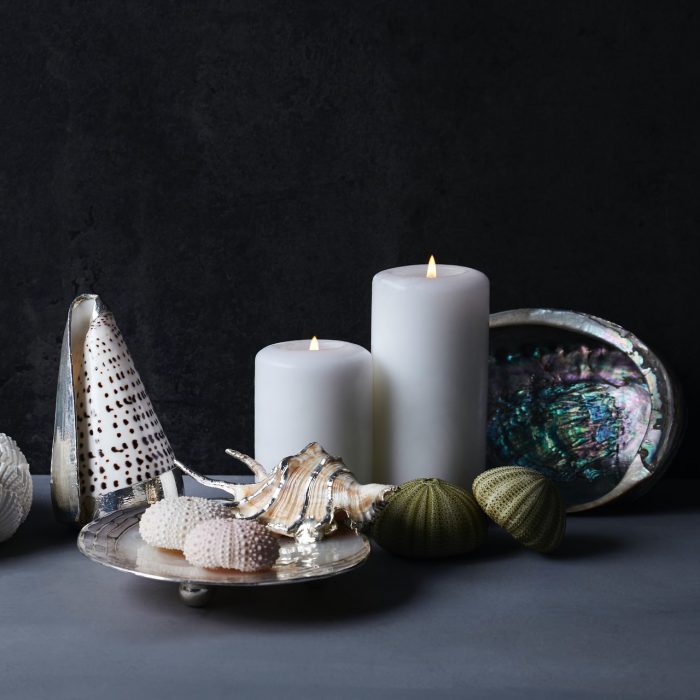



When you light a candle, the heat of the flame melts the wax near the wick. This melted or liquid wax is then drawn up into the wick by capillary action. The flame’s heat vaporizes the liquid wax and it reacts with oxygen to produce water vapor and carbon dioxide (the same byproducts that humans produce when exhaling).
No. Decades ago, some types of candles had wicks with lead cores for stability reasons. These candle types had never been particularly common in Europe however. Special braiding techniques have made wicks stable without any metal cores, and so lead wicks have not been an issue in Europe for many years.
More info about ECMA position: lead on wicks
Validated scientific studies have shown that all major candle waxes exhibit the same basic burn behavior and produce virtually identical combustion byproducts, both in terms of composition and amount. So, there is no significant difference between the candle waxes per se. Creating proper burning conditions and candle care following the manufacturer´s instruction is much more important.
VOCs are compounds that are composed primarily of carbon, oxygen, and hydrogen that can evaporate into the air. Therefore, nearly all fragrance ingredients in a candle are VOCs because they need to evaporate before you can smell them.
Not all VOCs are bad, unlike what you may have heard on the news. Every time you walk into a flower meadow or a forest, you are surrounded by VOCs from the plants. Many fragrance ingredients in a candle are identical to VOCs in nature. Other fragrance ingredients do not exist in nature, but are instead made in a laboratory.
A fragrance’s safety level is not dependent on whether it comes from nature or a lab. It is also contingent on the concentration of the specific VOC in the air. To ensure fragrances (VOCs) from candles are safe, fragrance formulas are reviewed against the safety standards established by the International Fragrance Association (IFRA). Each ingredient in the fragrance and the finished product is required to meet the specifications set down by IFRA to be compliant with the standard. If the fragrance and product meet the standard, then the fragrance VOCs in that particular product are considered safe for human use.
Consumers can be confident that a well-made and properly burned candle, whether scented or unscented, will burn cleanly and safely. Although there are no known health hazards associated with the normal use of scented candles, unfounded concerns about the safety of man-made fragrances vs. “natural” fragrance materials and essential oils continue to populate the media. The approval of a fragrance for candle usage is much more important than whether it is synthesized or “natural”.
Although millions of Europeans regularly use scented candles without any negative effects, it is always possible that a particular fragrance might trigger a negative reaction in a very small percentage of sensitive individuals. Individuals with known sensitivities to specific fragrances may want to avoid candles of those scents. Information if certain fragrances are contained at a level at which they might trigger an allergic reaction can be found on the label. In addition, consumers should remember to burn all candles, whether scented or unscented, in a well-ventilated area.

The most commonly used candle fuels are paraffin wax, vegetable fats (such as palm, soy, rapeseed, etc.) and vegetable or animal based fatty acids (often called ‘stearin’ or ‘stearic acid’). Manufacturers use them in pure form or as blends of two or more fuels. Beeswax candles are less common nowadays as beeswax has become short in supply and correspondingly expensive.
No. All types of quality candle fuels have been shown to burn cleanly, safely and in the same manner. European candle manufacturers select fuels or blends of fuels based on their suitability for specific types of candles or formulation profiles, as well as their customers’ preferences and their own candle-making preferences.
Not necessarily. ECMA members are committed to manufacturing candles that use ingredients known to be safe and approved for use in candles, whether “natural” or synthesized.
Although modern technology has introduced greater efficiencies and quality control in candle making, most candles are made through the timeless process of a wick into wax, which is then molded, dipped, extruded, pressed, rolled, drawn or filled into a desired shape and size.

A well-made candle will create virtually no smoke when burning properly. Consumers often incorrectly believe their candles are sooting because of the fuel type, fragrance, colorants or additives used in the candle’s formulation. But sooting is primarily due to flame and combustion disturbances. If the wick becomes too long, or an air current disturbs the flame’s teardrop shape, small amounts of unburned carbon particles (soot) will escape from the flame as a visible wisp of smoke. Any candle will soot if the flame is disturbed.
To avoid this, trim the wick to the length specified by the manufacturer (most commonly 1 cm) and be sure to place candles away from drafts, vents or air currents. If a candle continually flickers or smokes, it is not burning properly and should be extinguished. Allow the candle to cool, trim the wick, make sure the area is draft free, then re-light.
Minimum and maximum burn times vary from candle to candle, so it is important to follow the manufacturer’s instructions. You should always burn a candle long enough to completely melt its surface. Extinguish a candle if the flame gets too close to the candle holder or container.
Candles are one of the most enjoyable, affordable, and readily accessible luxury items. They infuse the home with color and fragrance, and can help create a special warmth and ambiance to allow for a sense of calm and well-being.